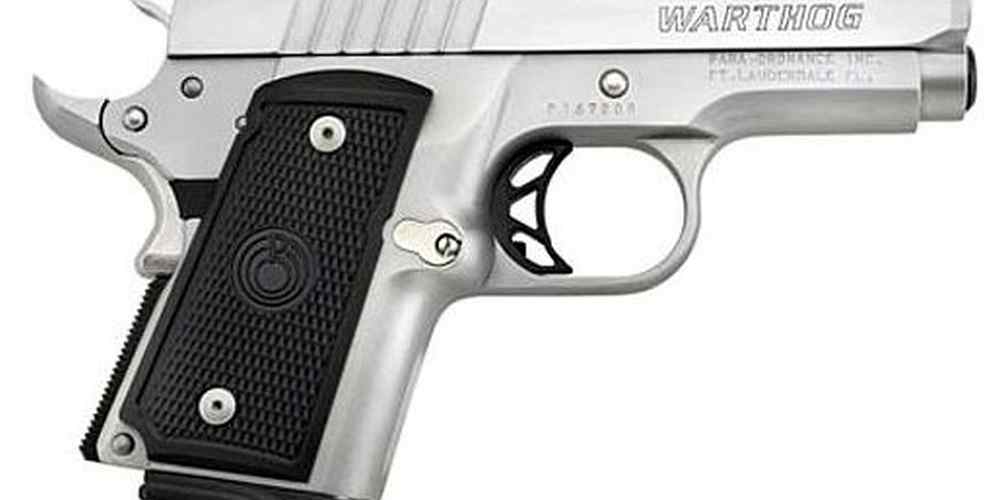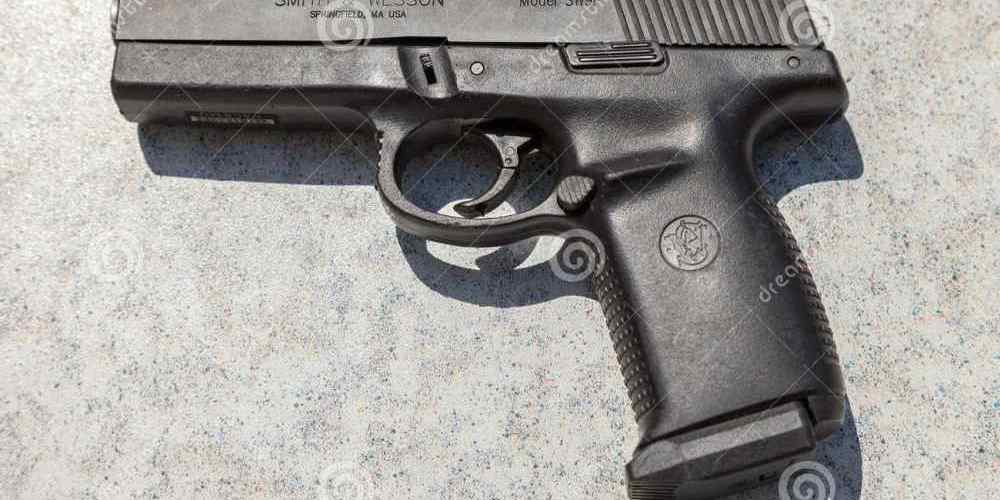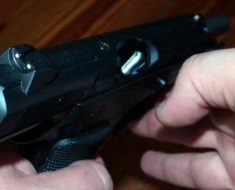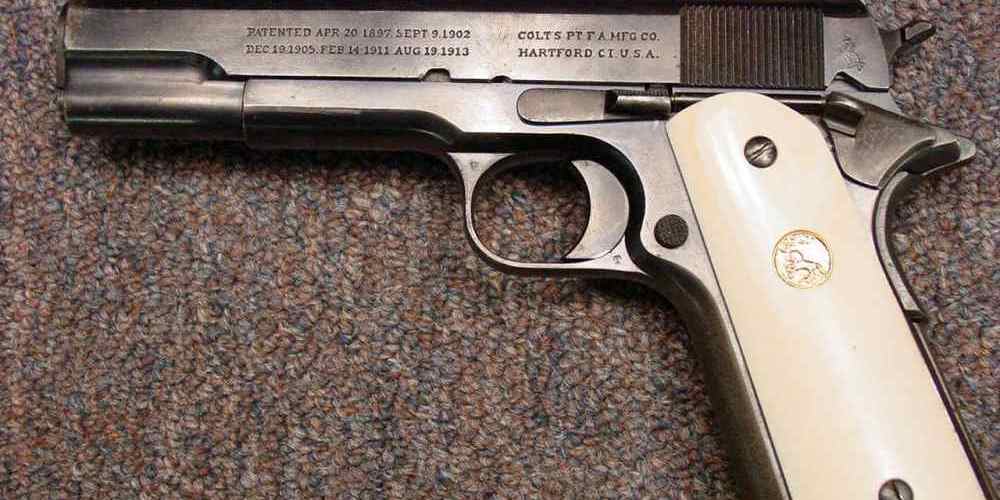“Revolutionizing firepower for the modern shooter.”
Enhanced Ergonomics in Semi-Auto Pistol Design
Semi-automatic pistols have been a staple in the firearms industry for decades, offering shooters a reliable and efficient option for self-defense, target shooting, and competition. As technology continues to advance, manufacturers are constantly looking for ways to improve upon the design of these firearms, with a particular focus on enhancing ergonomics.
One of the key areas of focus in the future of semi-auto pistol design is improving the ergonomics of the grip. A comfortable and secure grip is essential for accurate shooting and recoil management, so manufacturers are exploring new materials and textures to provide shooters with a better hold on their firearms. Some companies are experimenting with interchangeable grip panels that allow users to customize the size and shape of the grip to fit their hands perfectly.
In addition to grip design, manufacturers are also looking at ways to improve the overall feel of the pistol in the shooter’s hand. This includes reducing sharp edges and corners that can cause discomfort during extended shooting sessions, as well as refining the shape of the trigger guard and magazine release to make them easier to access and operate. By paying attention to these small details, manufacturers can create a more user-friendly and intuitive shooting experience.
Another area of focus in the future of semi-auto pistol design is the integration of technology into the firearms themselves. Some manufacturers are exploring the use of electronic sights and optics that can provide shooters with real-time feedback on their shooting performance, such as shot placement and accuracy. This technology can help shooters improve their skills and become more proficient with their firearms.
Additionally, some manufacturers are looking at ways to incorporate smart technology into semi-auto pistols, such as biometric sensors that can only be fired by authorized users or tracking devices that can help locate a lost or stolen firearm. While these features are still in the early stages of development, they have the potential to revolutionize the way shooters interact with their firearms and enhance safety and security.
Overall, the future of semi-auto pistol design is bright, with manufacturers focusing on enhancing ergonomics, integrating technology, and improving the overall shooting experience for users. By paying attention to the small details and constantly innovating, manufacturers can create firearms that are not only reliable and efficient but also comfortable and intuitive to use. As technology continues to advance, shooters can expect to see even more exciting developments in the world of semi-auto pistol design in the years to come.
Integration of Smart Technology in Semi-Auto Pistols
Semi-automatic pistols have been a staple in the firearms industry for decades, offering shooters a reliable and efficient option for self-defense, target shooting, and more. As technology continues to advance at a rapid pace, the integration of smart technology into semi-auto pistol design is becoming more prevalent. This trend is not only changing the way shooters interact with their firearms but also enhancing safety and performance in ways never before imagined.
One of the most significant advancements in smart technology for semi-auto pistols is the incorporation of biometric sensors. These sensors can be used to authenticate the user’s identity before the firearm can be fired, adding an extra layer of security to prevent unauthorized use. By scanning the shooter’s fingerprint or palm print, the pistol can ensure that only the designated user is able to operate the weapon, reducing the risk of accidents or misuse.
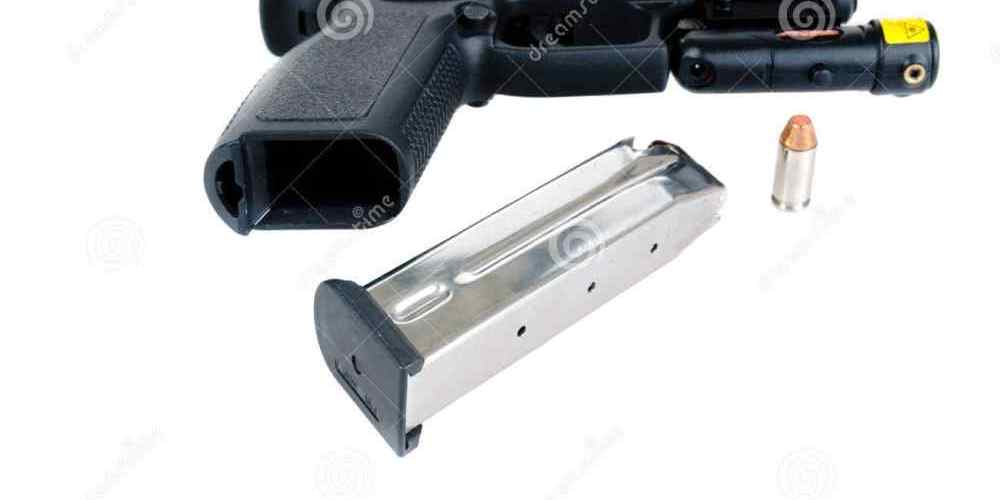
In addition to biometric sensors, smart pistols are also being equipped with RFID technology. This allows the firearm to communicate with a wearable device, such as a smartwatch or bracelet, to unlock the gun when in close proximity. This feature not only adds convenience for the user but also provides an added level of security by ensuring that the firearm cannot be fired by anyone other than the authorized user.
Another exciting development in smart pistol technology is the integration of Bluetooth connectivity. This allows the firearm to communicate with a smartphone or other device, providing real-time feedback on performance metrics such as round count, battery life, and more. Shooters can also use their smartphone to adjust settings on the pistol, such as trigger pull weight or firing mode, to customize their shooting experience to their preferences.
The incorporation of smart technology into semi-auto pistol design is not without its challenges, however. One of the primary concerns is the reliability of these systems in high-stress situations. In a self-defense scenario, the last thing a shooter wants is for their firearm to fail to function due to a technical glitch. Manufacturers are working diligently to ensure that smart pistols are as reliable as their traditional counterparts, conducting extensive testing to identify and address any potential issues.
Despite these challenges, the future of semi-auto pistol design is undeniably moving towards greater integration of smart technology. Shooters can expect to see more advanced features such as voice recognition, GPS tracking, and even augmented reality displays in the coming years. These innovations have the potential to revolutionize the way shooters interact with their firearms, making them safer, more efficient, and more enjoyable to use.
In conclusion, the integration of smart technology into semi-auto pistol design represents an exciting new frontier in the firearms industry. By incorporating biometric sensors, RFID technology, Bluetooth connectivity, and more, manufacturers are creating pistols that are safer, more secure, and more customizable than ever before. While there are still challenges to overcome, the future looks bright for smart pistols, and shooters can look forward to a new era of innovation and advancement in firearm design.
Advances in Materials for Lightweight and Durable Pistol Frames
Semi-automatic pistols have been a staple in the firearms industry for decades, offering shooters a reliable and efficient option for self-defense, target shooting, and competition. As technology continues to advance, so too does the design and construction of these firearms. One area that has seen significant progress in recent years is the development of lightweight and durable pistol frames.
Traditionally, pistol frames were made from steel or aluminum, which provided strength and durability but also added weight to the firearm. However, with advancements in materials science, manufacturers are now able to produce frames from polymers and composite materials that are just as strong as traditional metals but significantly lighter.
One of the most popular materials used in modern pistol frames is polymer. Polymer frames are made from a type of plastic that is reinforced with fibers to increase strength and rigidity. This material is not only lightweight but also resistant to corrosion and wear, making it an ideal choice for everyday carry pistols.
Another material that is gaining popularity in pistol frame construction is carbon fiber. Carbon fiber is an extremely strong and lightweight material that is commonly used in aerospace and automotive applications. By incorporating carbon fiber into pistol frames, manufacturers are able to reduce weight without sacrificing strength or durability.
In addition to polymers and carbon fiber, some manufacturers are experimenting with other composite materials, such as fiberglass and Kevlar. These materials offer unique properties that can be tailored to specific applications, such as increased impact resistance or improved heat dissipation.
The use of lightweight and durable materials in pistol frame construction has several benefits for shooters. First and foremost, a lighter pistol is easier to carry and handle, especially for those who carry a firearm for self-defense. Additionally, a lighter pistol can help reduce fatigue during extended shooting sessions, allowing shooters to maintain accuracy and control for longer periods of time.
Furthermore, the use of advanced materials in pistol frames can also improve the overall performance of the firearm. By reducing weight, manufacturers can optimize the balance and ergonomics of the pistol, making it more comfortable and easier to shoot accurately. Additionally, advanced materials can help reduce recoil and muzzle flip, allowing shooters to stay on target more effectively.
As technology continues to advance, we can expect to see even more innovations in the design and construction of semi-automatic pistol frames. Manufacturers will likely continue to experiment with new materials and manufacturing techniques to further improve the performance and reliability of these firearms.
In conclusion, the future of semi-automatic pistol design is bright, thanks in large part to advancements in materials for lightweight and durable pistol frames. Shooters can expect to see more options for lightweight and high-performance pistols in the coming years, as manufacturers continue to push the boundaries of what is possible with modern materials science. Whether you are a competitive shooter, a law enforcement officer, or a civilian looking for a reliable self-defense option, the advancements in pistol frame materials are sure to benefit you.
Modular Design Features for Customization and Adaptability
When it comes to semi-auto pistol design, the future is looking bright with the introduction of modular design features that allow for customization and adaptability. These features are revolutionizing the way shooters can personalize their firearms to suit their individual needs and preferences.
One of the key benefits of modular design features is the ability to easily swap out components to create a pistol that is tailored to the shooter’s specific requirements. This can include changing the grip size, trigger pull weight, or even the caliber of the firearm. With modular design, shooters have the flexibility to experiment with different configurations until they find the perfect setup for their shooting style.
Another advantage of modular design features is the ability to easily upgrade or replace parts as needed. This can help extend the lifespan of the pistol and ensure that it remains in top working condition for years to come. Whether it’s a worn-out barrel or a malfunctioning trigger, shooters can quickly and easily swap out components without the need for specialized tools or gunsmithing skills.
In addition to customization and adaptability, modular design features also offer shooters the opportunity to stay up-to-date with the latest advancements in pistol technology. As new components and accessories are developed, shooters can easily incorporate them into their existing pistol setup without having to purchase a whole new firearm. This not only saves money but also allows shooters to take advantage of the latest innovations in the industry.
One of the most popular modular design features is the ability to switch between different calibers with a simple barrel swap. This allows shooters to use the same pistol for a variety of shooting activities, from target practice to self-defense. With just a few quick adjustments, shooters can switch from a .22LR for plinking at the range to a .45 ACP for home defense, making their pistol a versatile tool for any situation.
Another popular modular design feature is the ability to adjust the grip size and shape to fit the shooter’s hand comfortably. This can help improve accuracy and control, especially for shooters with smaller hands or those who prefer a more ergonomic grip. By simply swapping out grip panels or backstraps, shooters can create a custom fit that enhances their shooting experience.
Overall, modular design features are shaping the future of semi-auto pistol design by offering shooters unprecedented levels of customization and adaptability. Whether it’s changing calibers, upgrading components, or adjusting the grip, shooters can easily tailor their pistol to meet their individual needs and preferences. With the ability to stay current with the latest advancements in pistol technology, shooters can enjoy a versatile and reliable firearm that will serve them well for years to come.
Improved Recoil Management Systems for Enhanced Accuracy and Control
Semi-automatic pistols have come a long way since their inception, with advancements in technology continuously pushing the boundaries of what is possible in terms of design and performance. One area that has seen significant improvement in recent years is recoil management systems, which play a crucial role in enhancing accuracy and control for shooters.
Recoil, the backward movement of a firearm upon firing, can have a significant impact on a shooter’s ability to maintain accuracy and control during rapid fire. Traditional semi-automatic pistols rely on a combination of factors, such as the weight of the firearm, the design of the grip, and the caliber of the ammunition, to help mitigate recoil. However, these factors can only do so much to reduce the effects of recoil, especially when shooting high-powered rounds.
To address this issue, manufacturers have been developing innovative recoil management systems that are specifically designed to minimize the effects of recoil and improve overall shooting performance. One such system is the use of recoil-reducing mechanisms, such as gas-operated systems or recoil springs, which help to absorb and redirect the energy generated by the firing of the round. These systems work by counteracting the rearward force of the recoil, allowing the shooter to maintain better control over the firearm and stay on target more effectively.
Another key component of improved recoil management systems is the design of the pistol grip. A comfortable and ergonomic grip can help to distribute the force of recoil more evenly across the shooter’s hand, reducing the impact felt during firing. Many modern semi-automatic pistols feature textured grips and adjustable backstraps, allowing shooters to customize their grip for maximum comfort and control.
In addition to recoil-reducing mechanisms and ergonomic grips, advancements in materials and manufacturing processes have also played a significant role in improving recoil management systems. Lightweight materials, such as polymer frames and aluminum alloys, help to reduce the overall weight of the firearm, making it easier for shooters to handle and control. Furthermore, precision machining techniques allow for tighter tolerances and smoother operation, resulting in a more consistent shooting experience.
Overall, the future of semi-automatic pistol design looks promising, with continued advancements in recoil management systems leading to enhanced accuracy and control for shooters of all skill levels. Whether you are a competitive shooter looking to gain an edge in competition or a recreational shooter looking to improve your marksmanship, the latest innovations in recoil management systems are sure to impress.
As technology continues to evolve, we can expect to see even more improvements in recoil management systems, with manufacturers pushing the boundaries of what is possible in terms of design and performance. With these advancements, shooters can look forward to a more enjoyable and accurate shooting experience, making the future of semi-automatic pistol design brighter than ever before.




